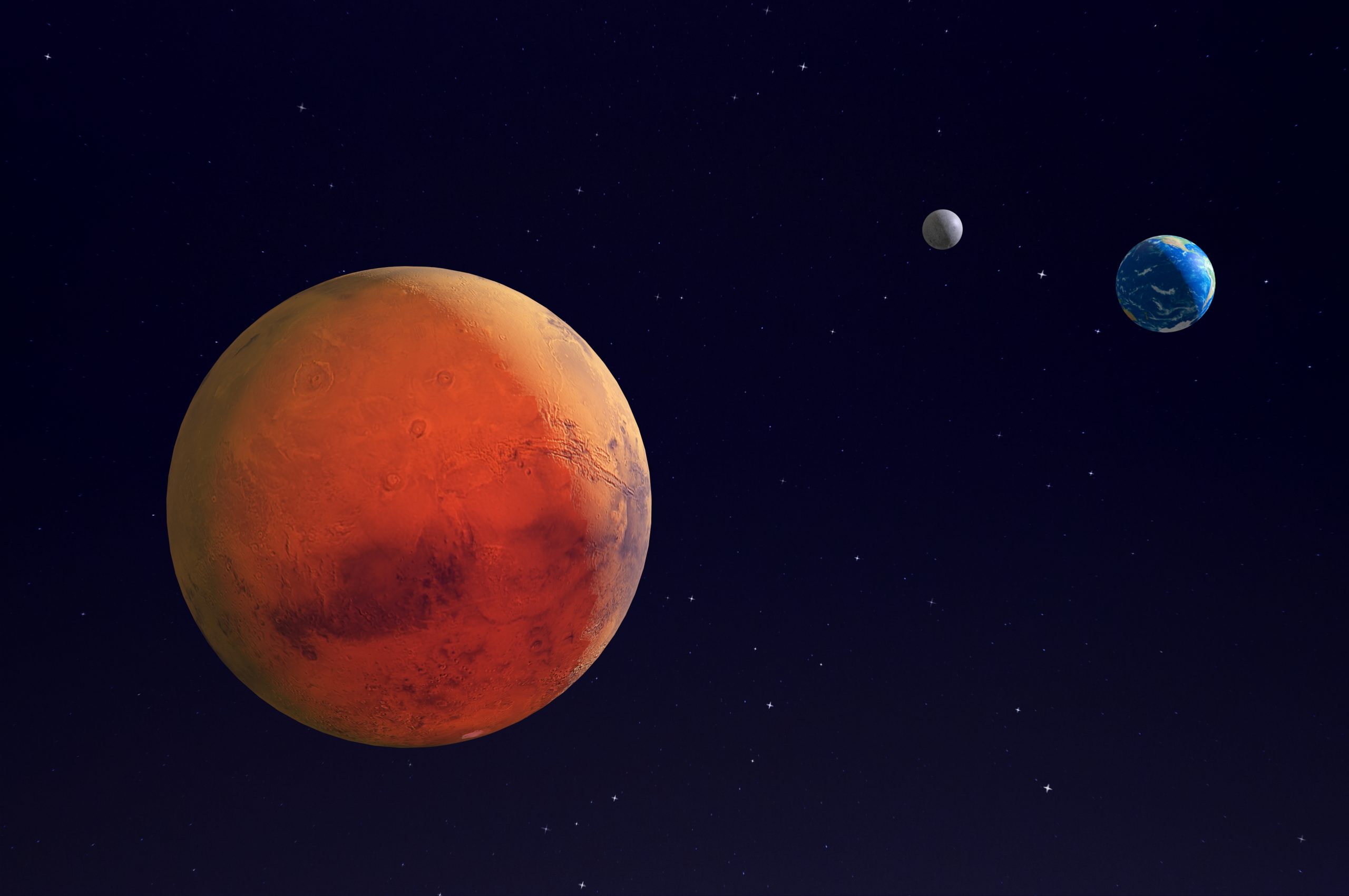Florida Tech Researchers Explore Buzz Aldrin’s Mars Cycler Concept
Mars is the next frontier in space for human exploration, but how will we get there? Research underway at Florida Tech is examining travel possibilities via a cycler spacecraft and an associated crew transfer system.
Aerospace engineering associate professor Markus Wilde, alongside university graduate student Larissa Balestrero Machado, recently released a research paper, “Parametric Design of a Crew Transfer Vehicle for Earth–Mars Cyclers” that examines the spacecraft mass and size required to transfer crew between Earth, a cycler spacecraft, and Mars.
The cycler spacecraft would stay in an elliptical orbit around the Sun, performing regular fly-bys of Earth and Mars. The crew transfer vehicle would lift off from Earth during one of those fly-bys, catch up with the cycler to deliver the crew, and after a few months transport the crew from the cycler to a low Mars orbit. After the crew finishes its mission on Mars, the crew transfer vehicle and cycler will then be used in reverse order to get the crew back to Earth and pick up the next expedition. The cycler potentially will provide a providing a potential cost-efficient and energy-efficient space travel solution.
Wilde and Machado’s initial research findings have determined that “aerocapture,” an orbital transfer maneuver in which a spacecraft uses aerodynamic drag force from a single pass through a planetary atmosphere to decelerate and achieve orbit insertion, could reduce the amount of fuel needed to reach Mars. The findings also emphasized the importance of a heat shield, which would be used to prevent spacecraft from burning up on entry into a planet’s atmosphere.
“The idea is, what if we start flying missions to Mars basically every time we can, so that we start a pipeline almost like a train service that would get new crews to and from Mars every two years?” Wilde said. “Instead of flying point-to-point missions that we do with rovers and unmanned spacecraft, we could use a cycler for sustainable, crewed Mars exploration.”
The motivation for the current cycler research stems from Apollo 11 astronaut Buzz Aldrin, whose Cycling Pathway to Occupy Mars system involved spacecraft travelling between Earth and Mars possibly using far less propellant than conventional means, with an expected five-and-a-half-month journey from the Earth to Mars, and a return trip to Earth of about the same duration on a twin semi-cycler.
Wilde and Machado looked at what would be needed to get the crew to and from this system, performing a sizing study that examined factors over a 14-day period of space travel, such as the fuel needed, the type of spacecraft and equipment for the crew, as well as contingency plans in which the crew would need to stay on the cycler until it returns to Earth after a full orbit around the Sun.
In studying the potential for cycler transportation use, Wilde said it would take many decades of use for the investment in the cycler to pay off, similar to the International Space Station. Much like the ISS, this would also mean potentially having astronauts on the cycler for extended periods of time to maintain and repair the system. Wilde sees these issues possibly being alleviated through advanced manufacturing but noted making the system work for a long time would be a challenge.
While the premise of a transportation cycler is still in the concept stage, and according to Wilde would be more feasible once there is a permanently crewed Mars research station, the system could have important use beyond transporting spacecraft.
“The cycler has potential as a scientific outpost by itself,” he said. “You could use it as deep space research station for heliophysics and astronomy before you get to Mars.”
###





